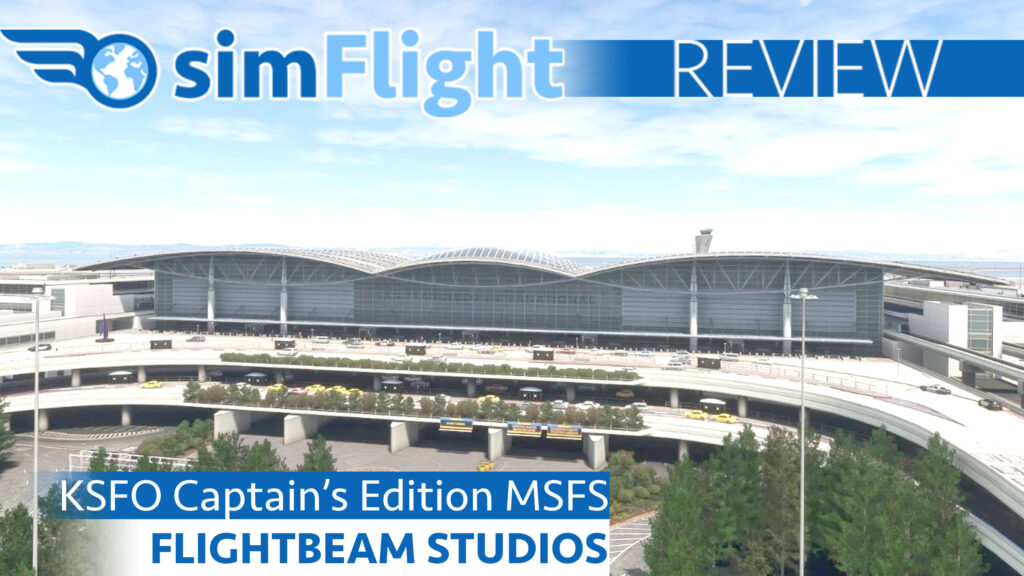
Review by: Rick Desjardins
San Francisco International Airport, ICAO: KSFO, is the primary international airport serving the San Francisco Bay area in the U.S. state of California. It is the busiest airport in the San Francisco Bay area and the second busiest airport in California after LAX. Also of note; in 2023 it ranked as the fourteenth busiest airport in the U.S and 30th busiest worldwide based on a passenger count of over 50 million.
The airport’s origin can be traced back to when the City of San Francisco first leased 150 acres of land in 1927 for a temporary airport project. In 1931 the city purchased the land and surrounding area expanding the size to 1,112 acres; it was then that it became known as San Francisco Airport. “International” was added at the end of the Second World War when overseas travel quickly expanded. Over the many decades following it expanded both the amount of operations as well as its size to what it is today covering approximately 5,200 acres. The airport is also home to the United States Coast Guard Air Station San Francisco.
The airport has four runways; 01L/19R @7,650ft approved for GPS approaches, 01R/19L @8.650ft, 10L/28R @11,870ft and 10R/28L @11,381ft. These last three runways are all ILS equipped with runways 28R and 28L used for arrivals the majority of times due to normal prevailing winds.
Installation
Installation and any updates for the product are done via the Contrail App. When you have completed your purchase a serial number is provided and also the set up exe file for the app. Installing the app is simple and upon completion you will be able to select the airport and install it in the location of your choice. You are also given the option of installing the VGDS module as well. After my initial purchase of v1.0.1 an update v1.1.1 was pushed out. Updating the product was a simple process completed via the app.
Visuals
Ground Textures
Ground textures are all of a very high quality providing a realistic and convincing base for the airport overall. With the recent update to v 1.1.1 the hard surfaces were made to look even more realistic with an additional layer of scuffs and texture markings.
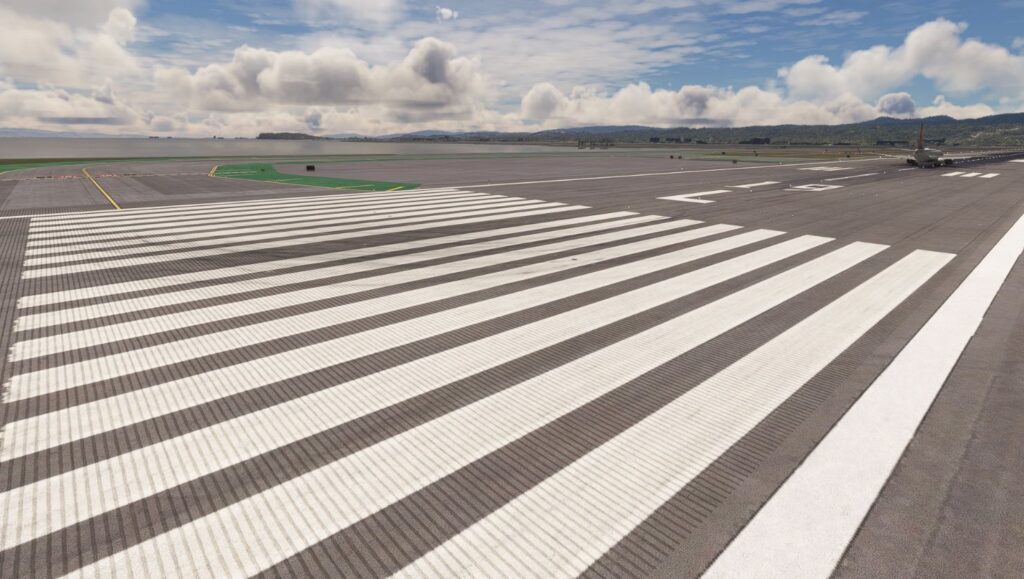
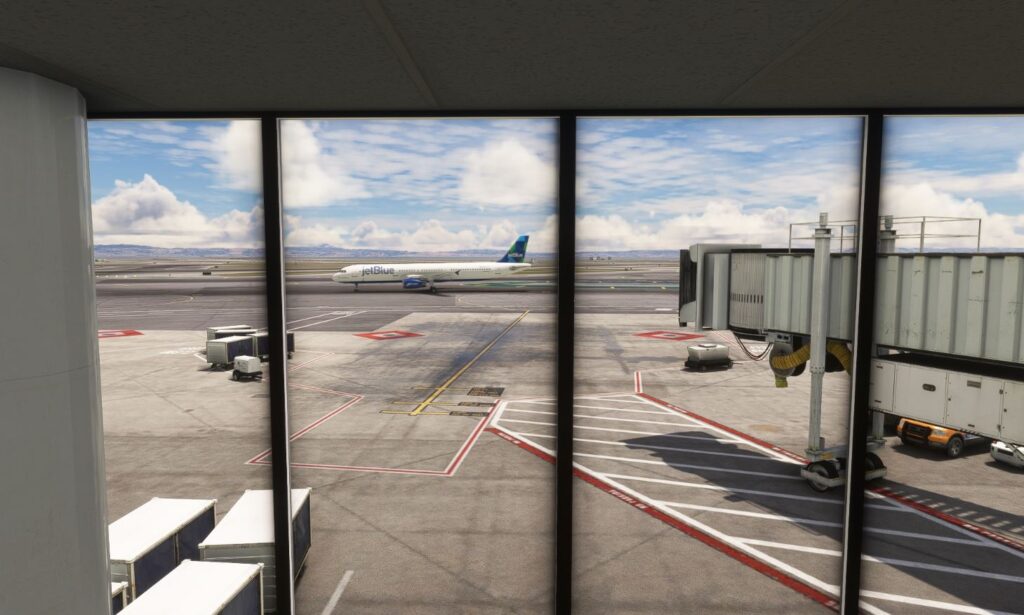
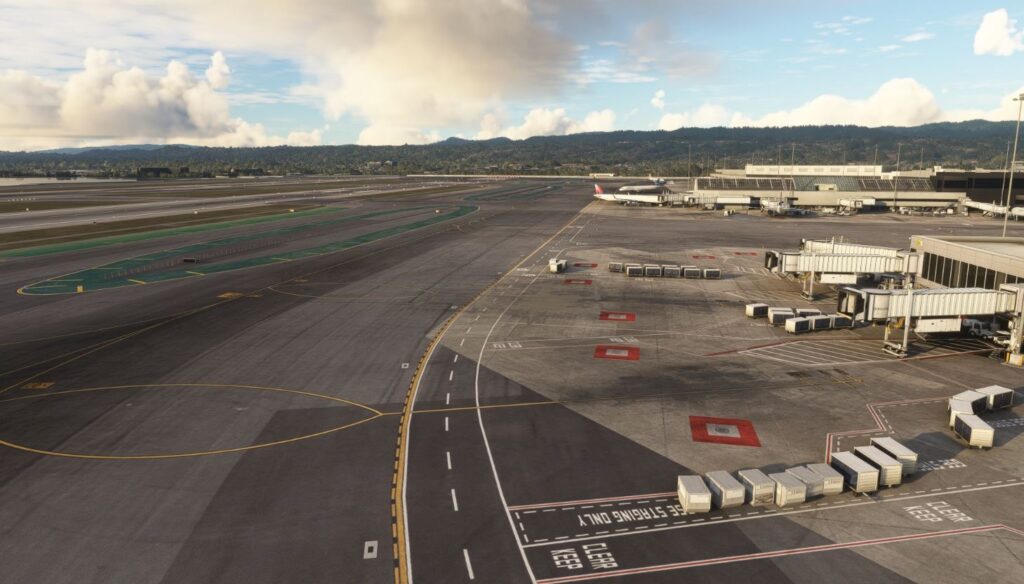
Structures
Overall structure quality was exceptional being extremely realistic. Each structure regardless of size was meticulously recreated using the very best graphic textures and enhancement techniques to capture their individual characteristics resulting in the most realistic visual experience possible.
The most complex and the largest of all structures is the passenger terminal; it is a multi-faceted and interesting design. The entire complex forms a modified circle. Upon entering the airport by road you are met with the facade of the main hall of the Senator Dianne Feinstein International Terminal and its wave like roof line. Jutting out from opposite sides are concourses A and G. Continuing on in a counter clockwise direction are the three domestic terminals; Harvey Milk or South Terminal 1 with concourse B, Central Terminal 2 with concourses C and D and finally the North Terminal 3 with concourses E and F. The centre of this circle is home to a large multi-level car park area. The terminal complex is centrally located between runways 1L and 10R. The developer captured its unique design and provided a realistic recreation from the ground up. Not only was the level of detail impressive but also how the effects of time and exposure to environmental extremes have been captured giving it an aged look; this was especially evident on the rooftops and jet ways. The first time I pulled up to a jet way and I saw the rust stains and scratch marks on the corrugated metal skin I was wowed.
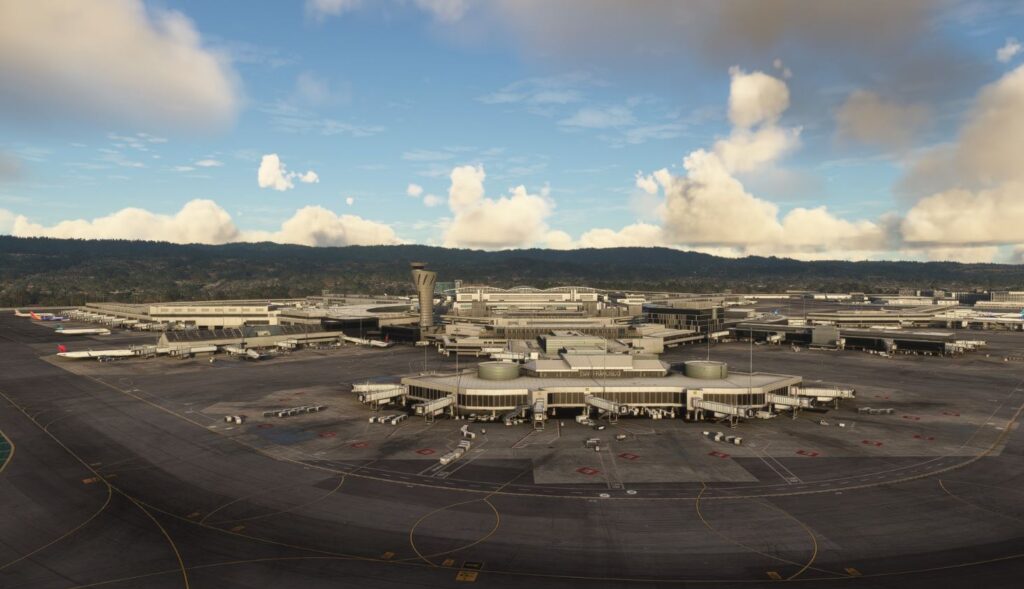
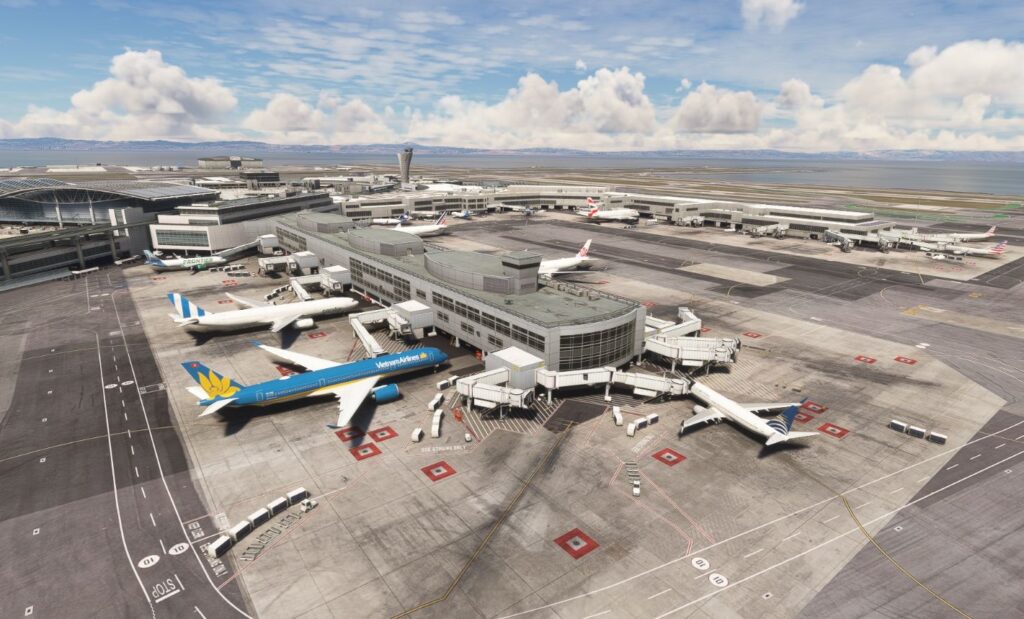
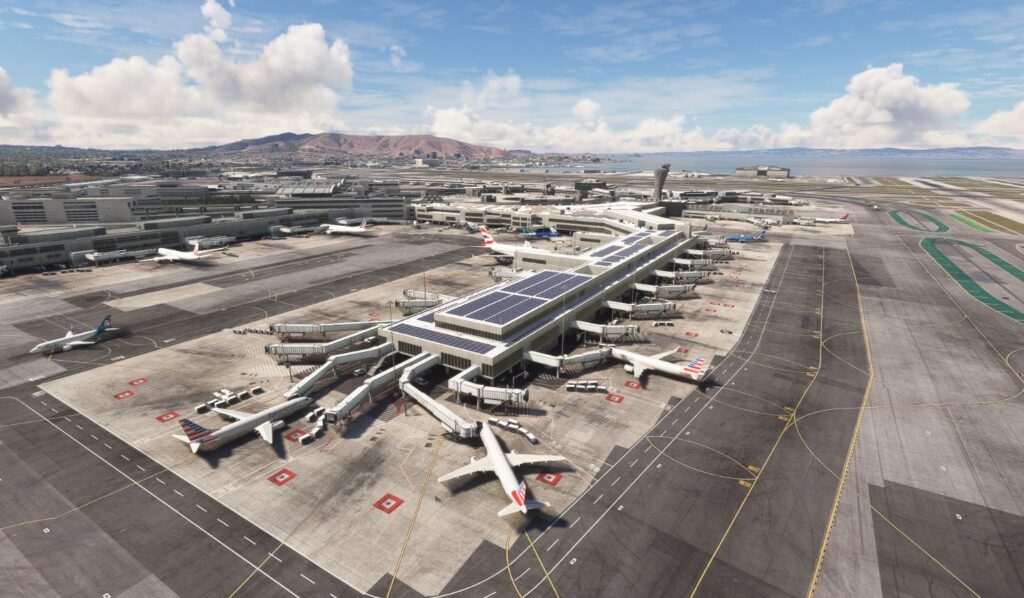
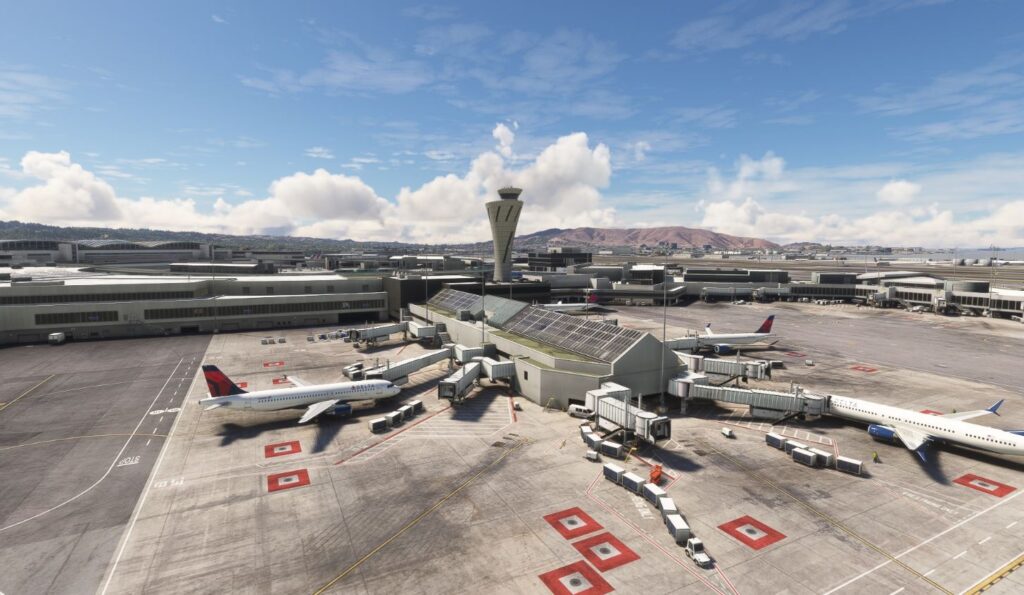
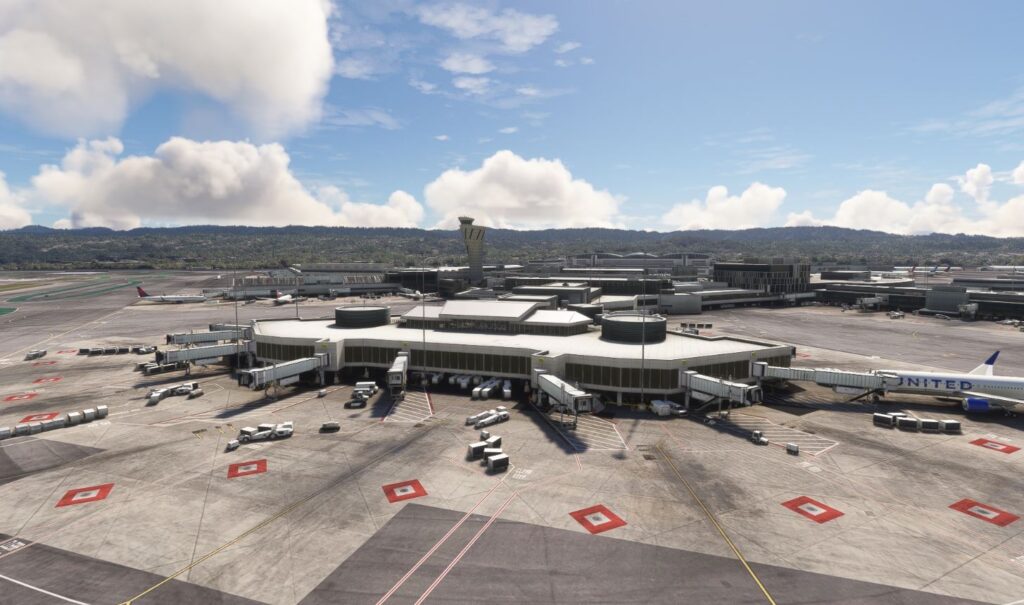
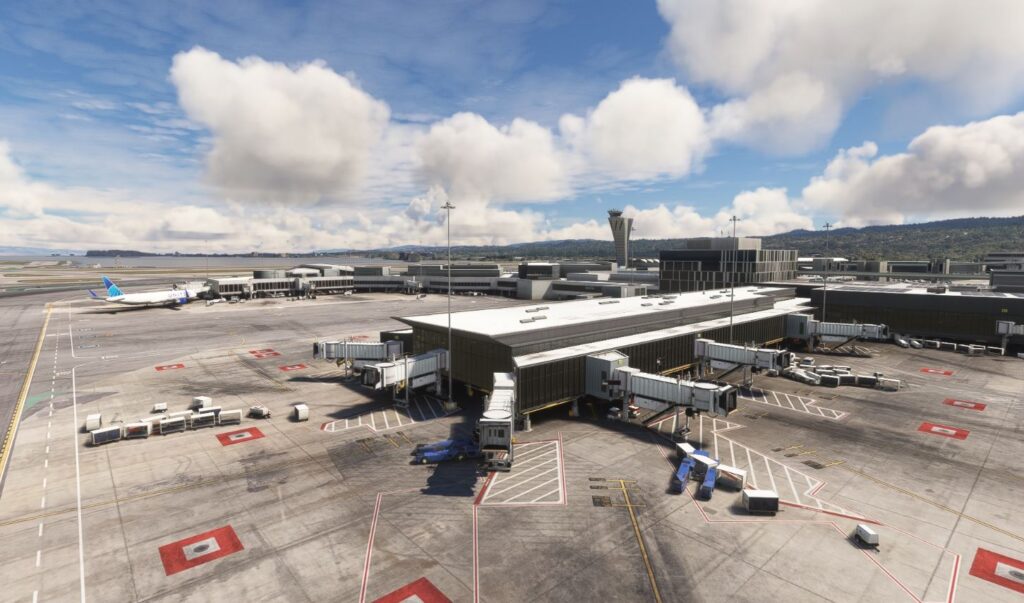
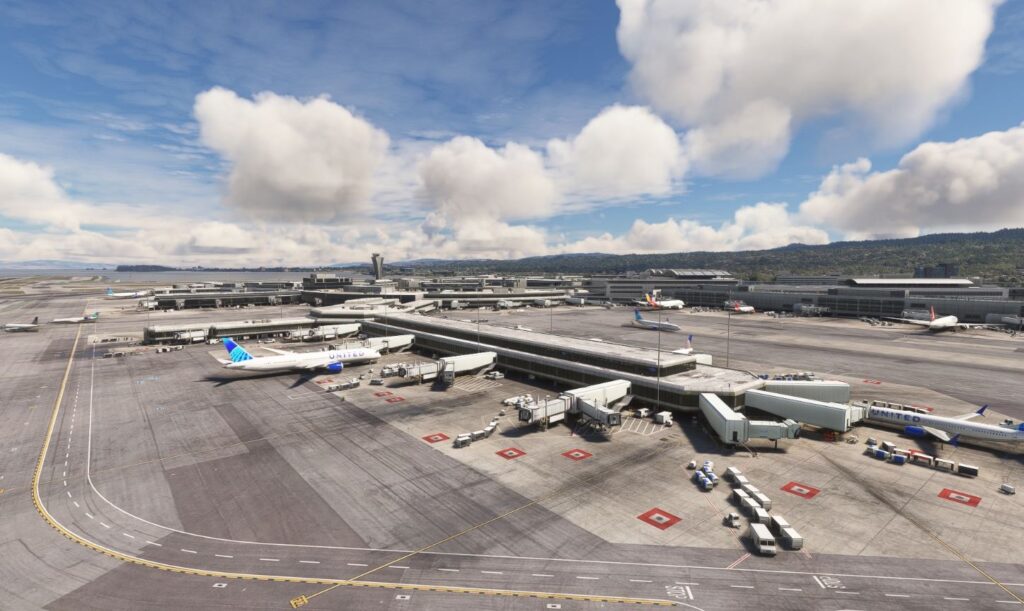
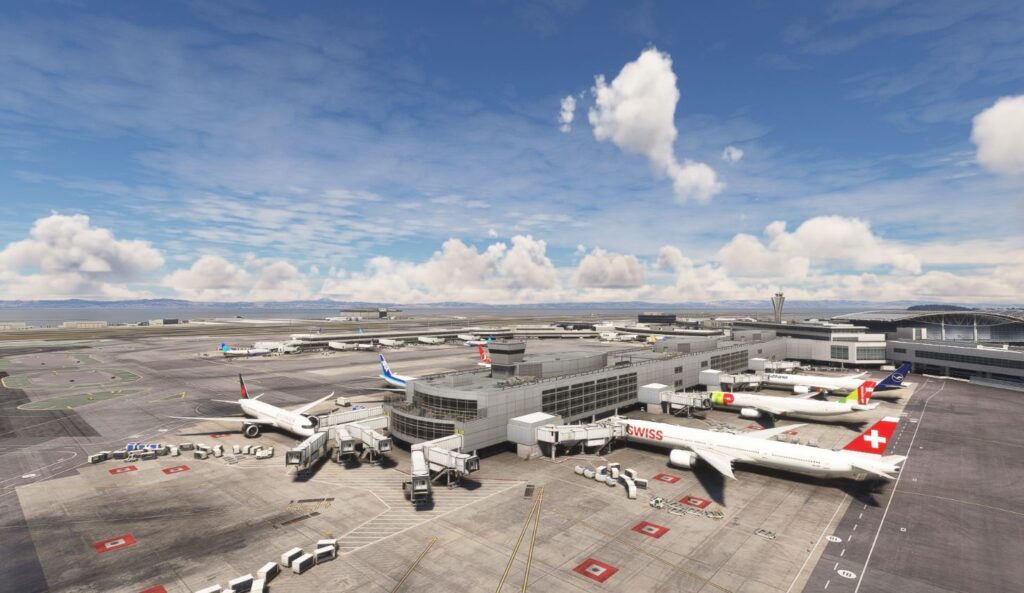
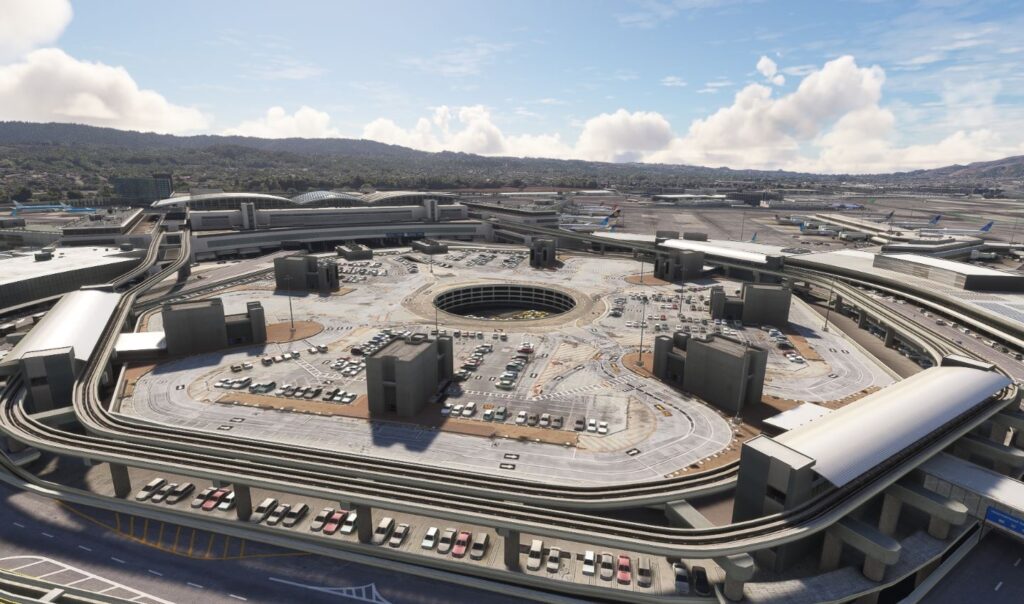
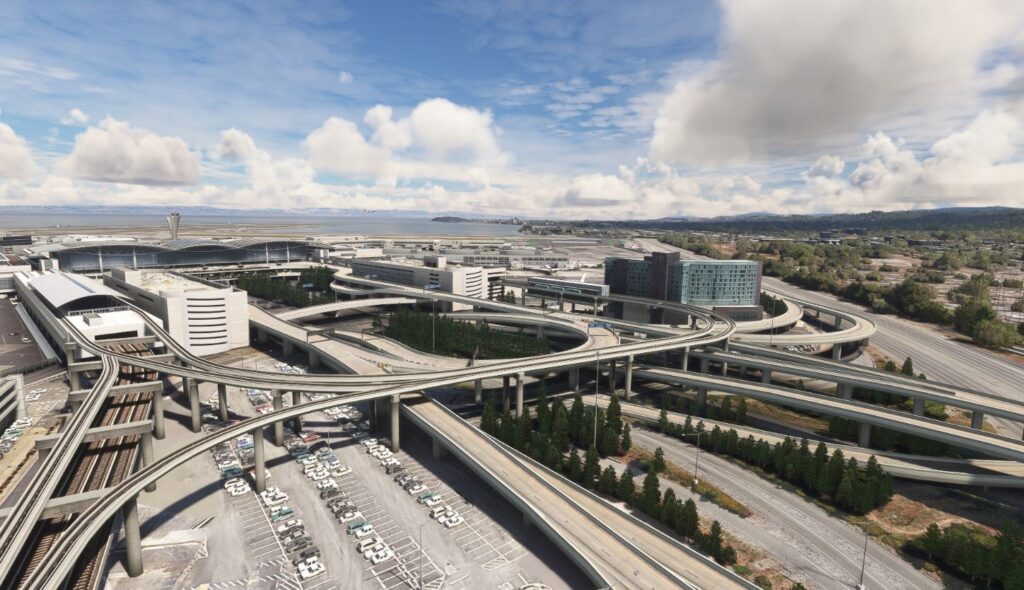
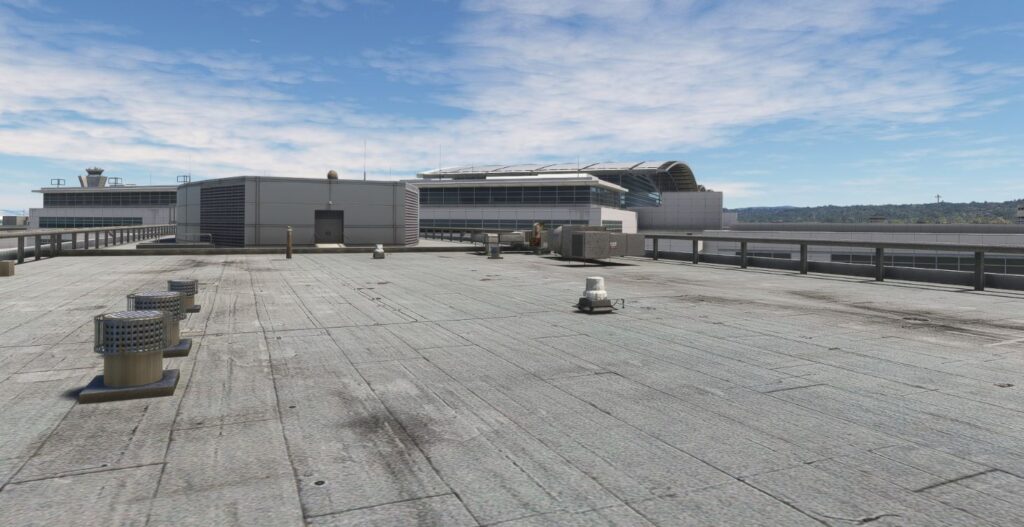
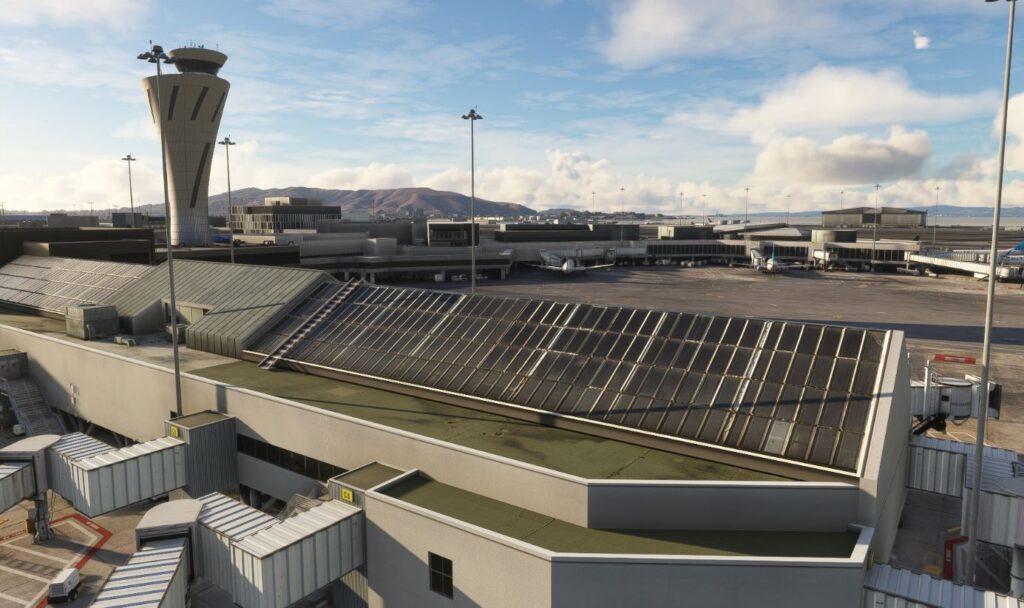
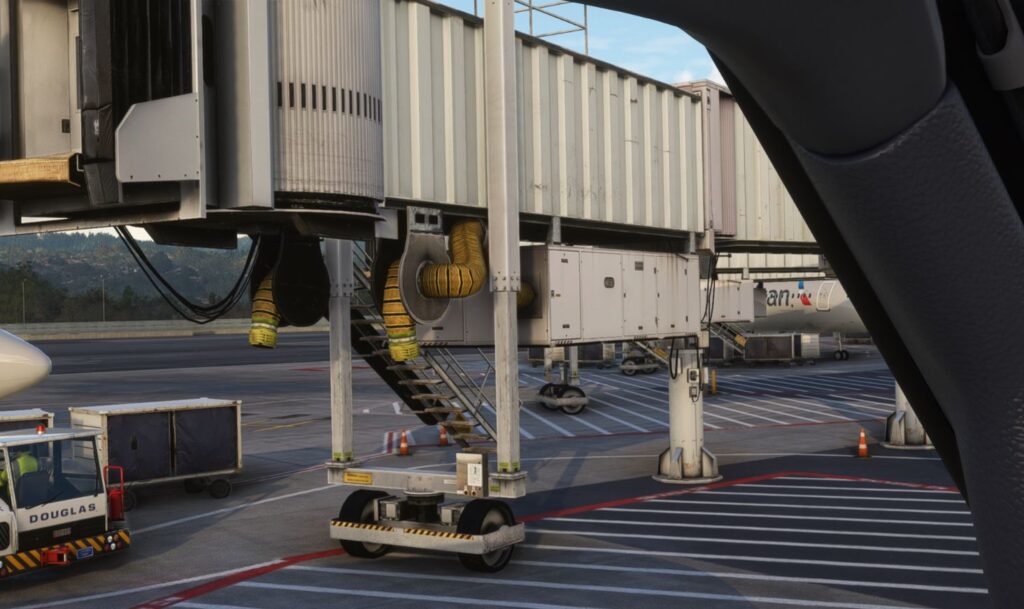
In addition to the terminals there were of course many other structures scattered about the airport grounds, these include the usual array; GA hangars, cargo facilities, tower and fire hall. KSFO as previously mentioned shares its location with the United States Coast Guard Air Station San Francisco. All are beautifully rendered in great detail showing the same level of dedication in modelling as displayed with the passenger terminals. Each has had their own unique visual characteristics captured.
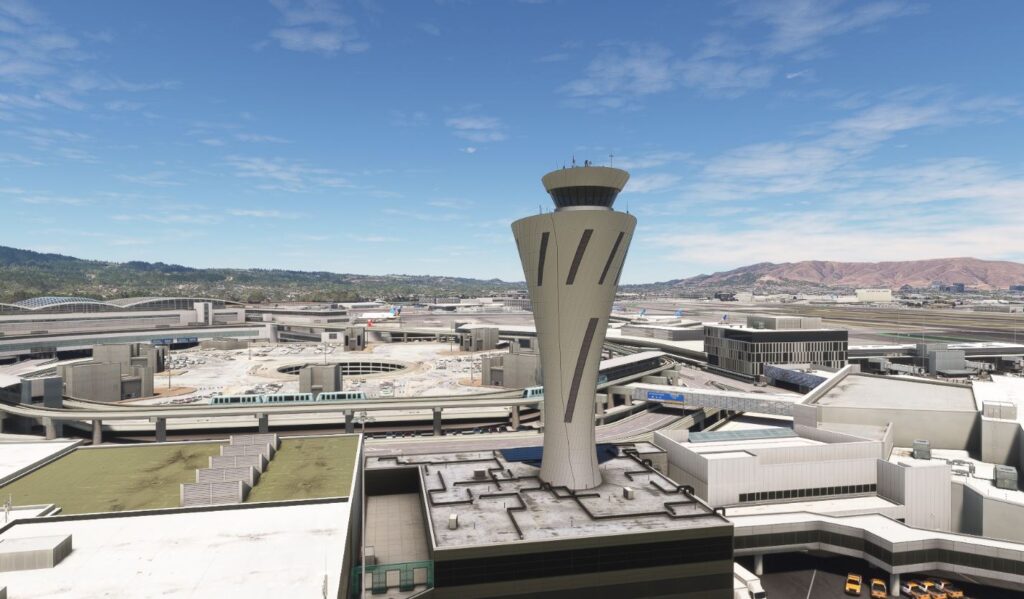
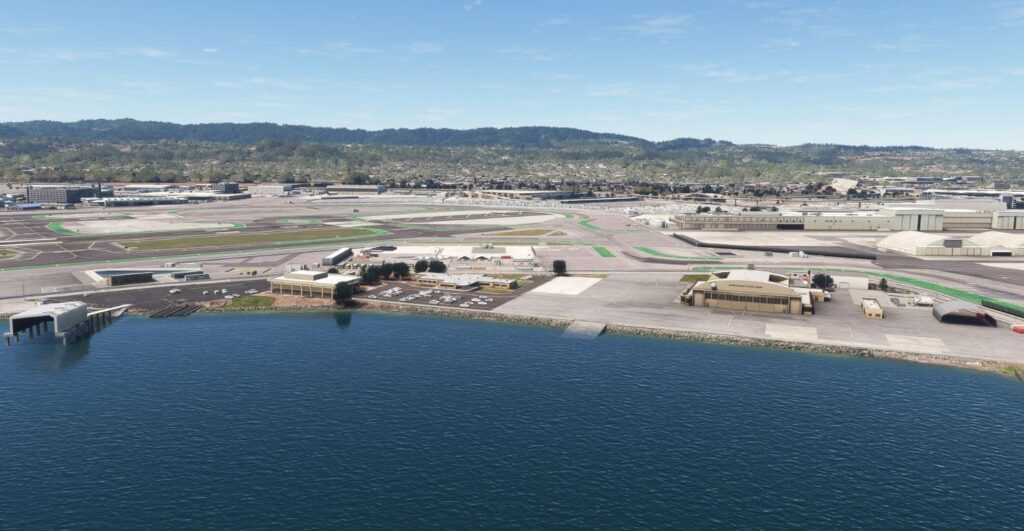
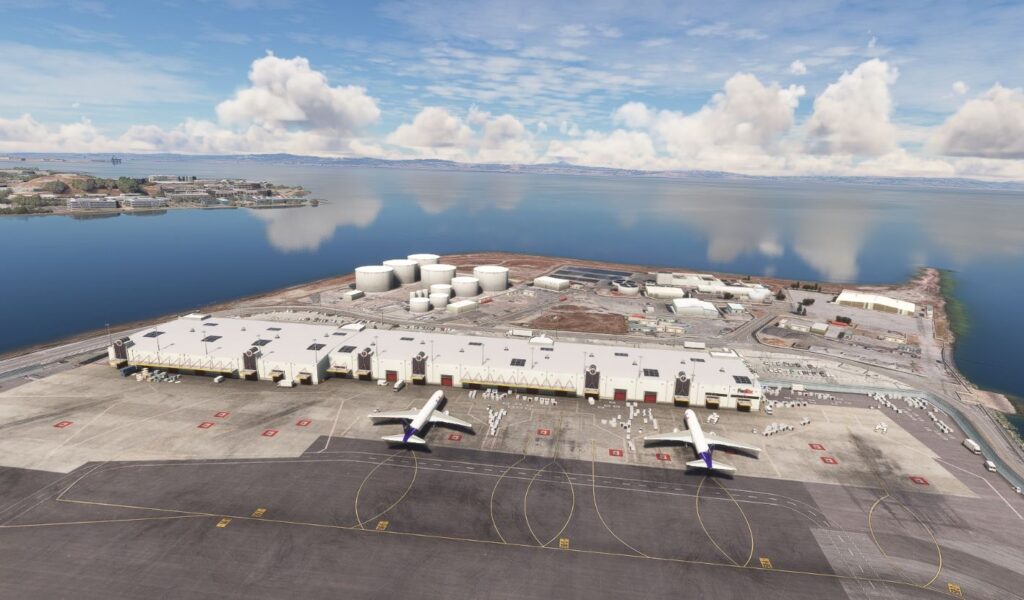
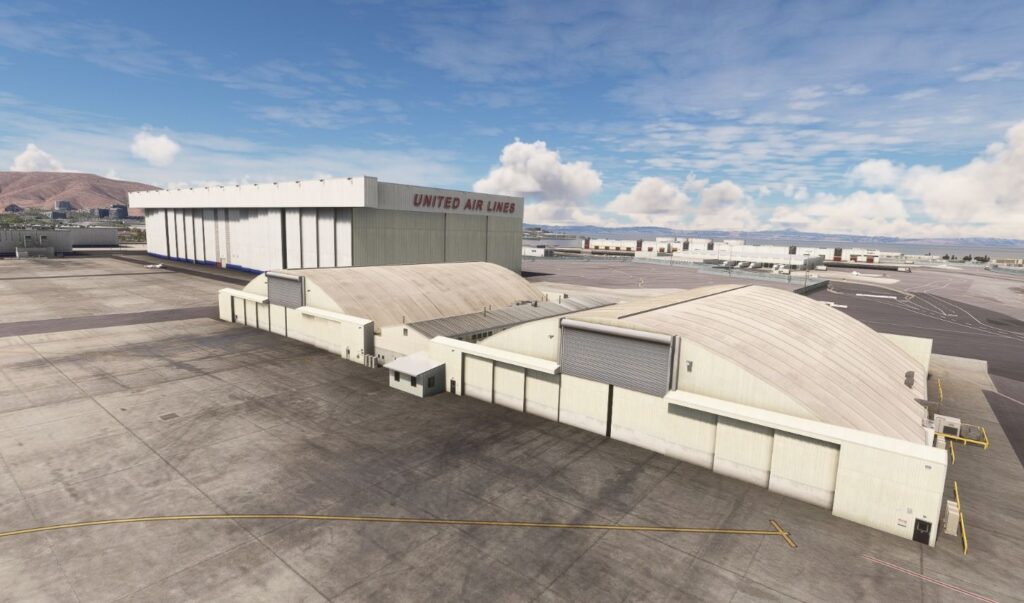
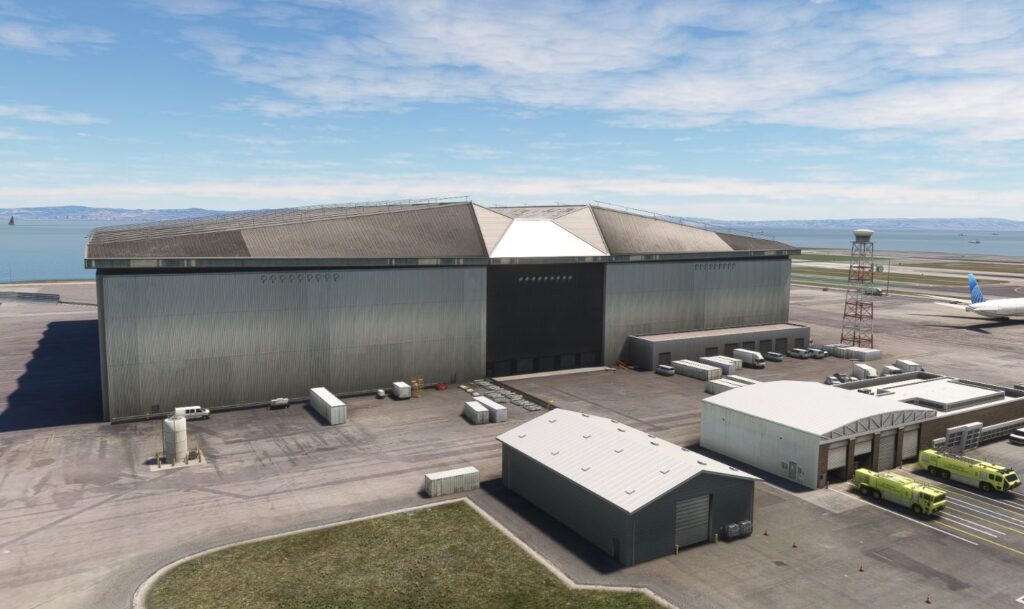
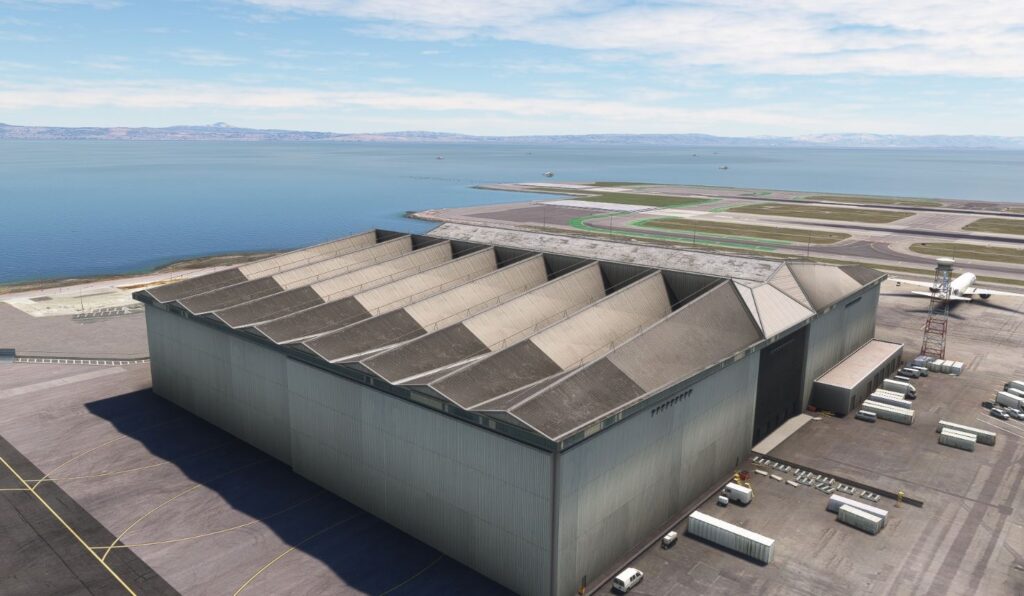
Structure Interiors
Several of the passenger concourse interiors were modelled to the same high standard as their exteriors. Each had plenty of intricate detailing to give you that sense of being there. Not all concourses were modelled however which for me was not an issue as most of my time is spent in the cockpit. I do find it interesting however to see what the various terminals look like in the different airports around the world. I applaud their decision to limit the interior modelling as the computing overhead would likely increase possibly to a point where some would be unable to enjoy the product. On that note I would have liked there to be a configuration option to remove these interiors if desired.
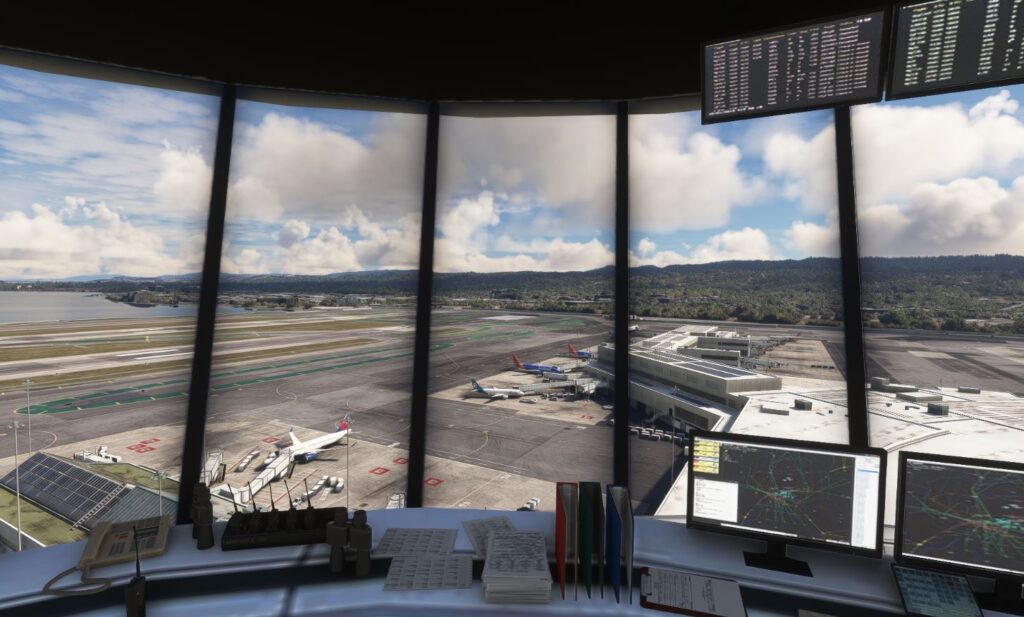
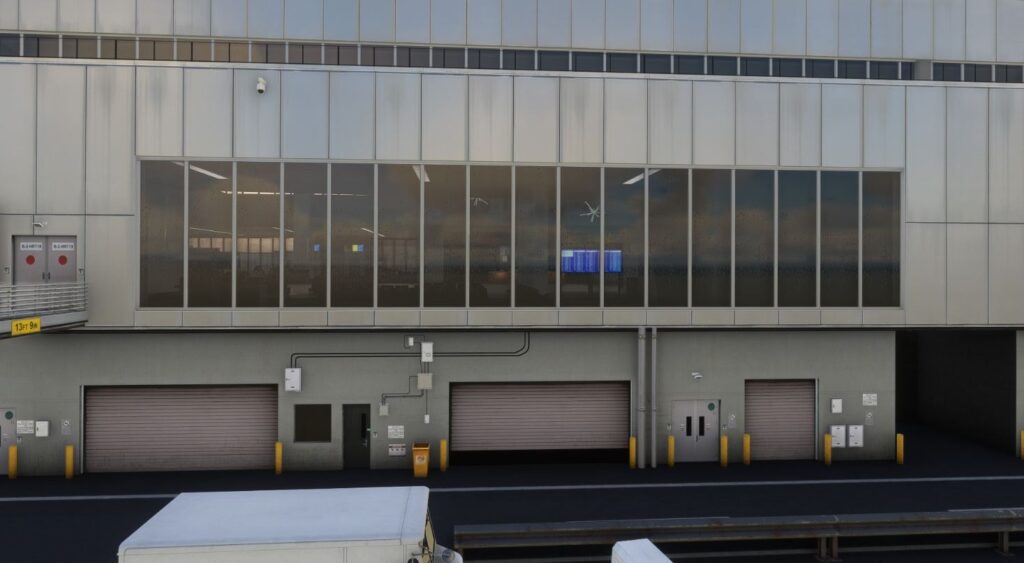
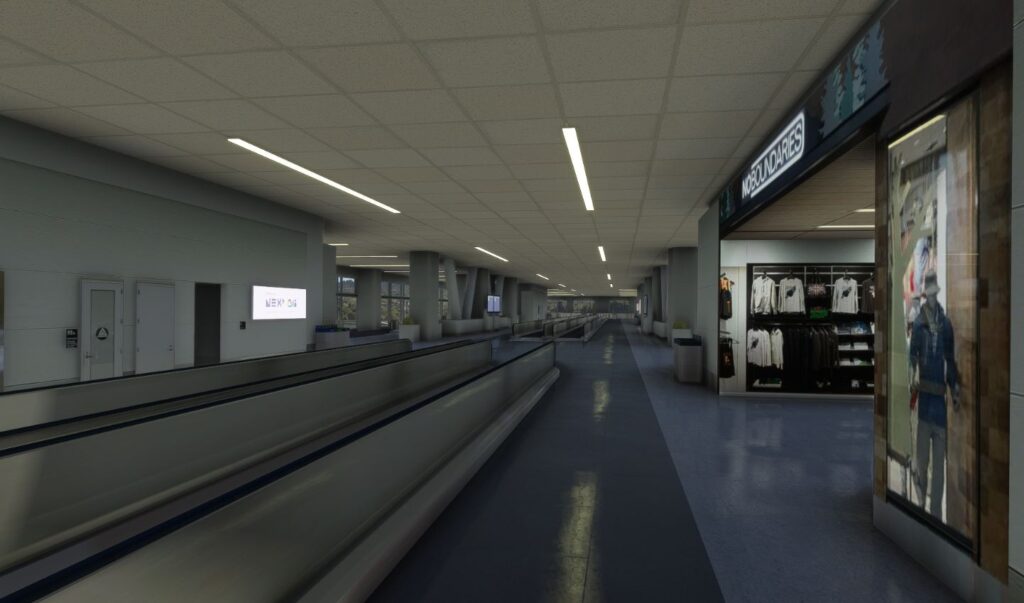
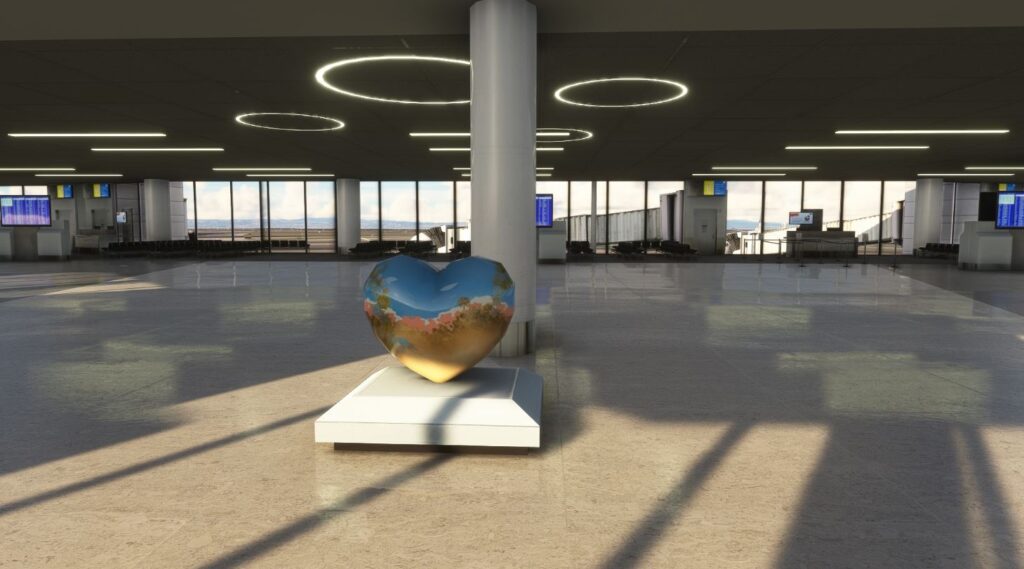
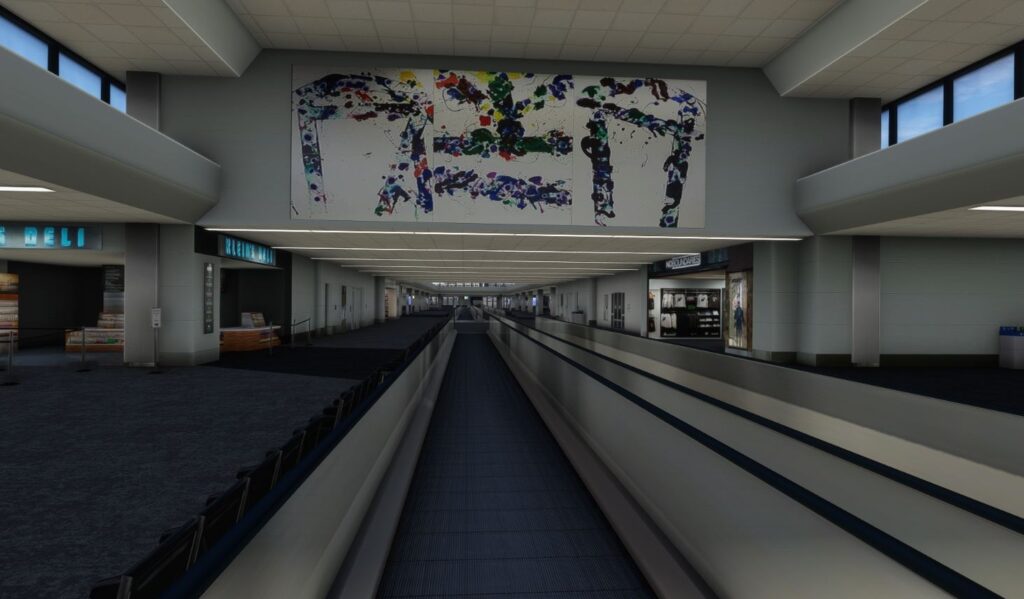
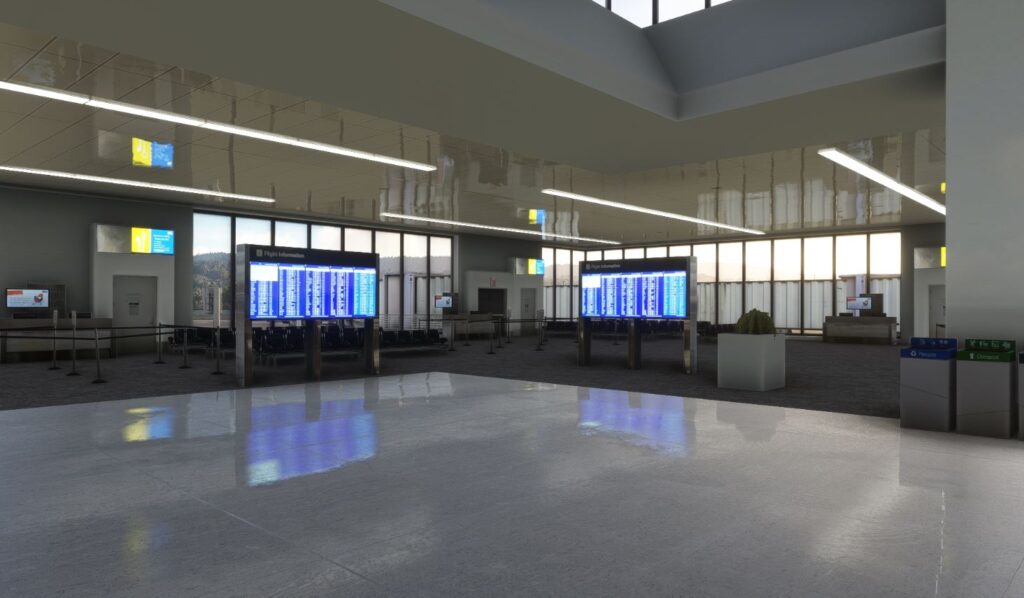
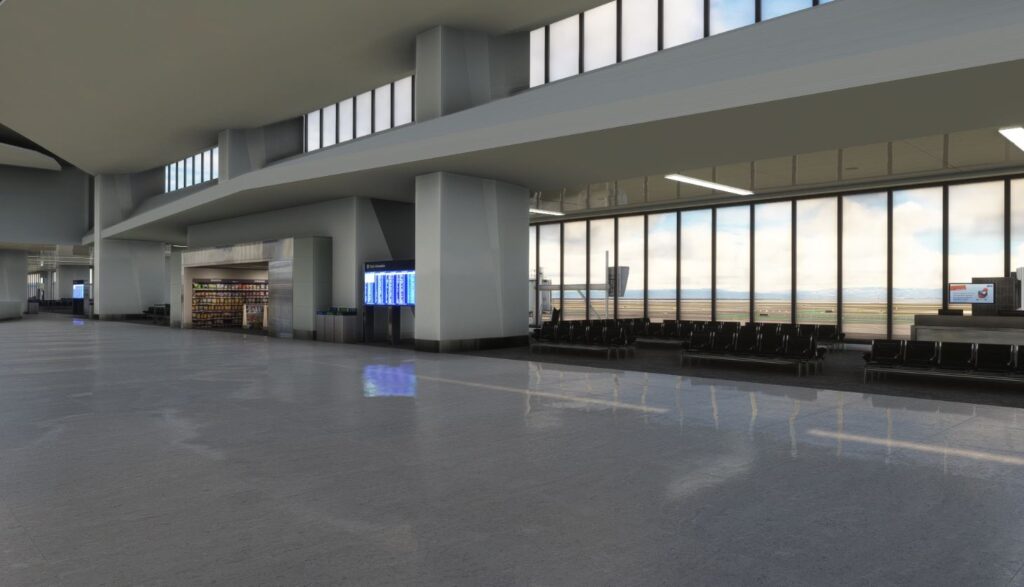
Objects
There was no shortage of scenery enhancing objects. As expected they covered all the bases as far as including the wide variety of operationally necessary objects. Equally important however are all of the other ancillary objects that may be less obvious but are essential to give the airport the vibrant busy atmosphere we expect to find. The quality of these were equivalent to other visual aspects of the scenery.
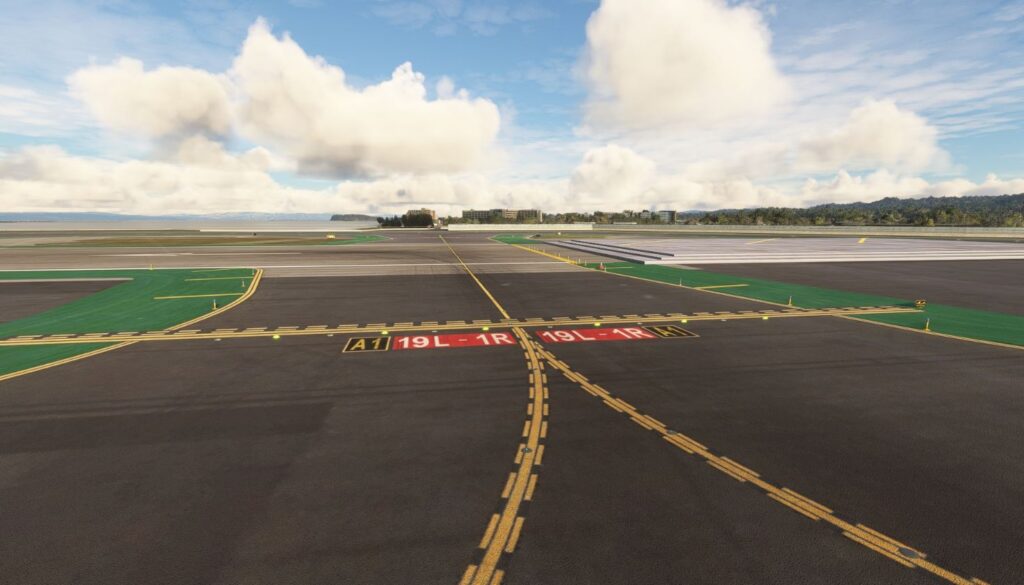
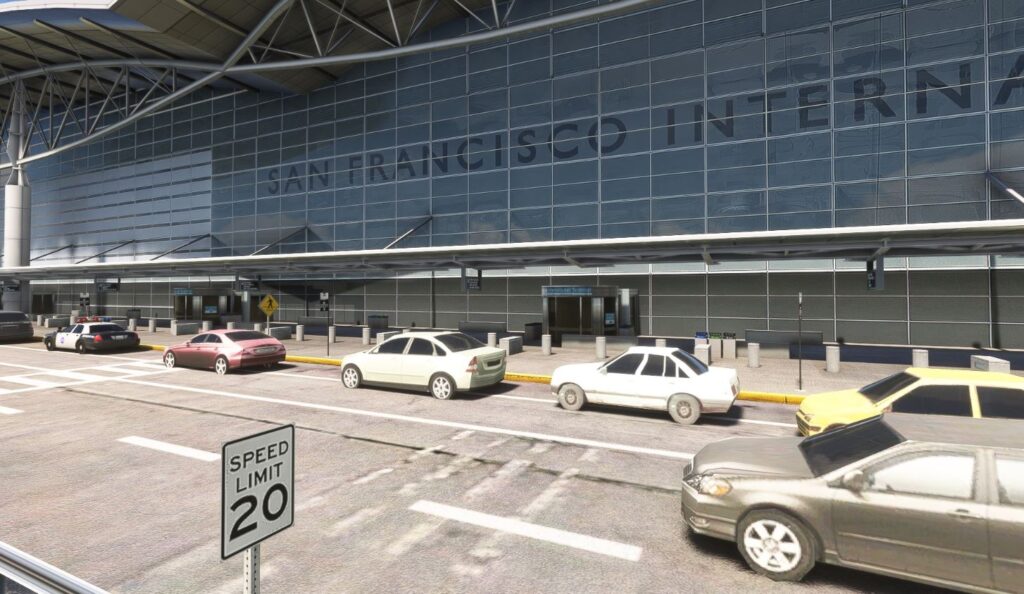
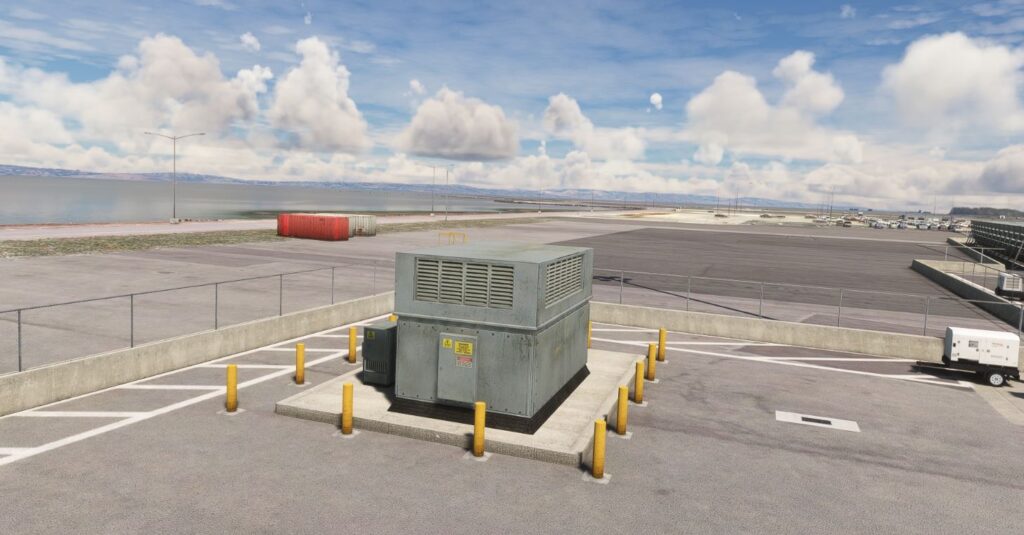
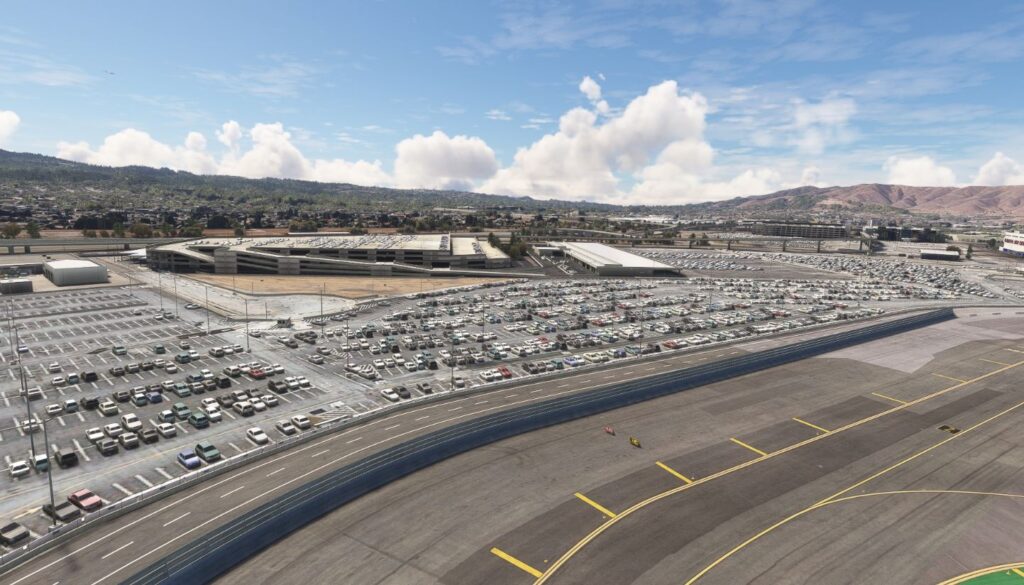
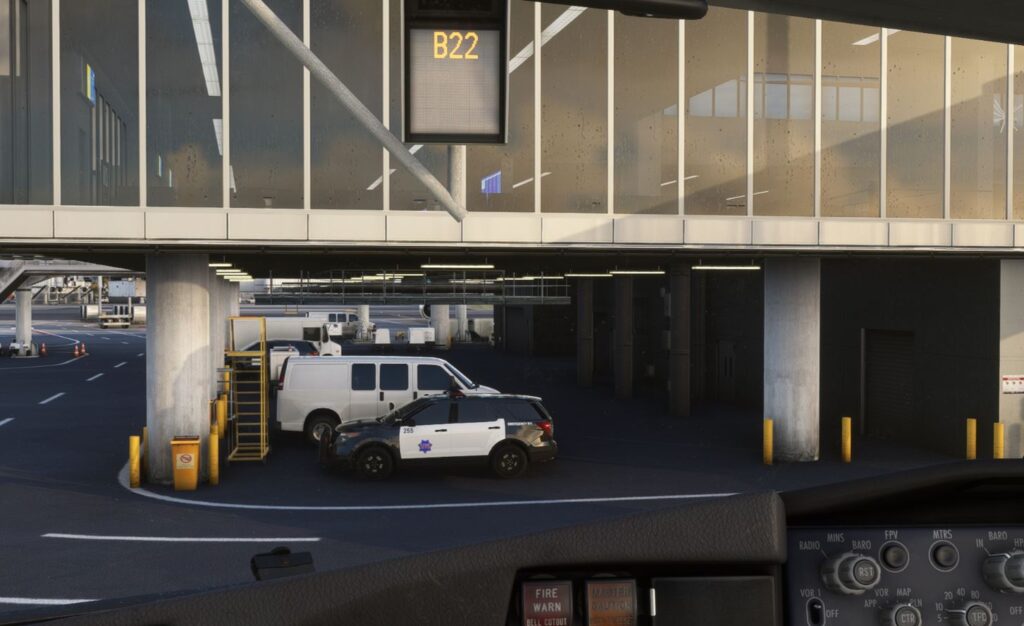
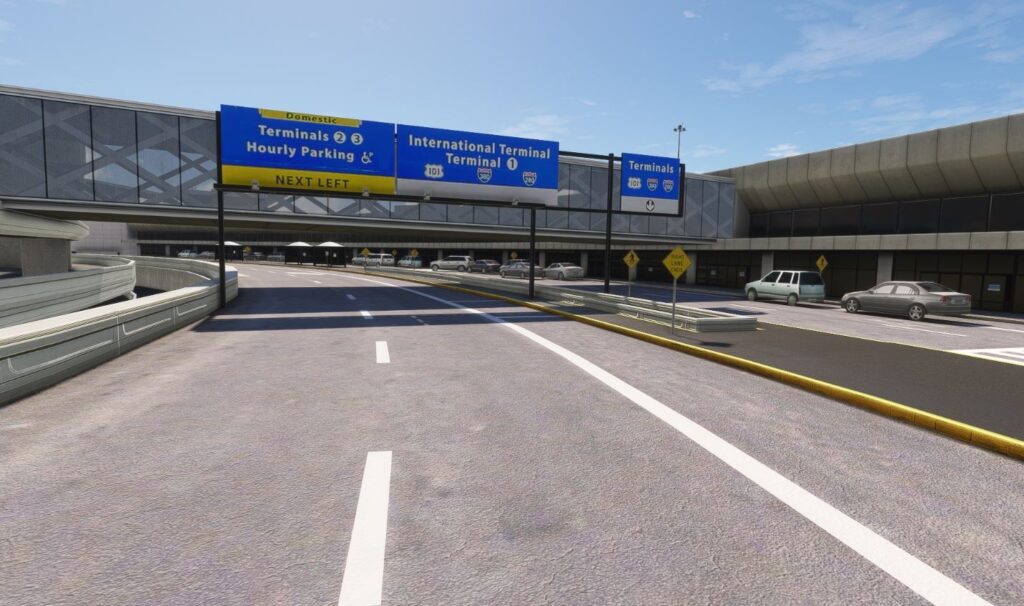
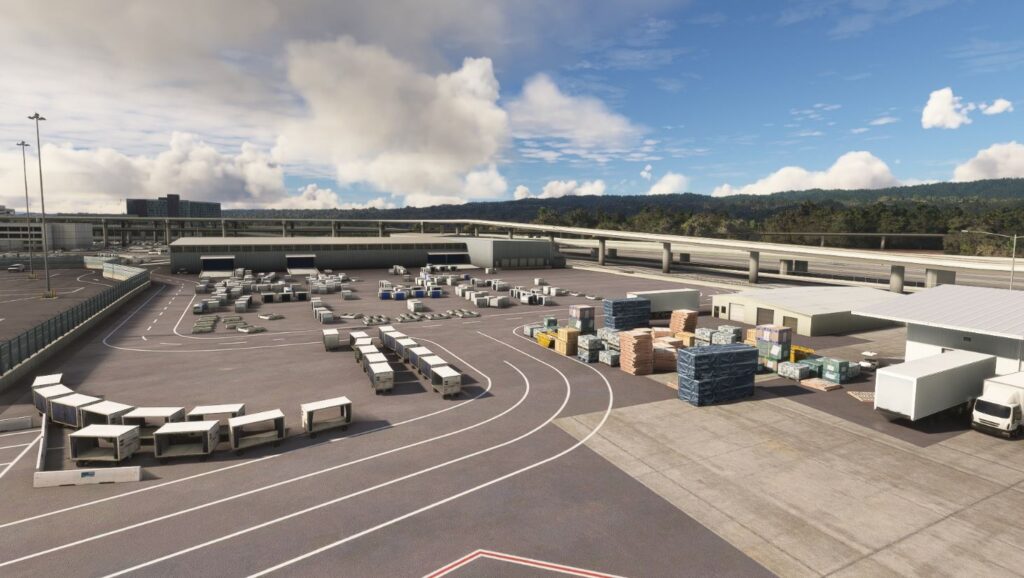
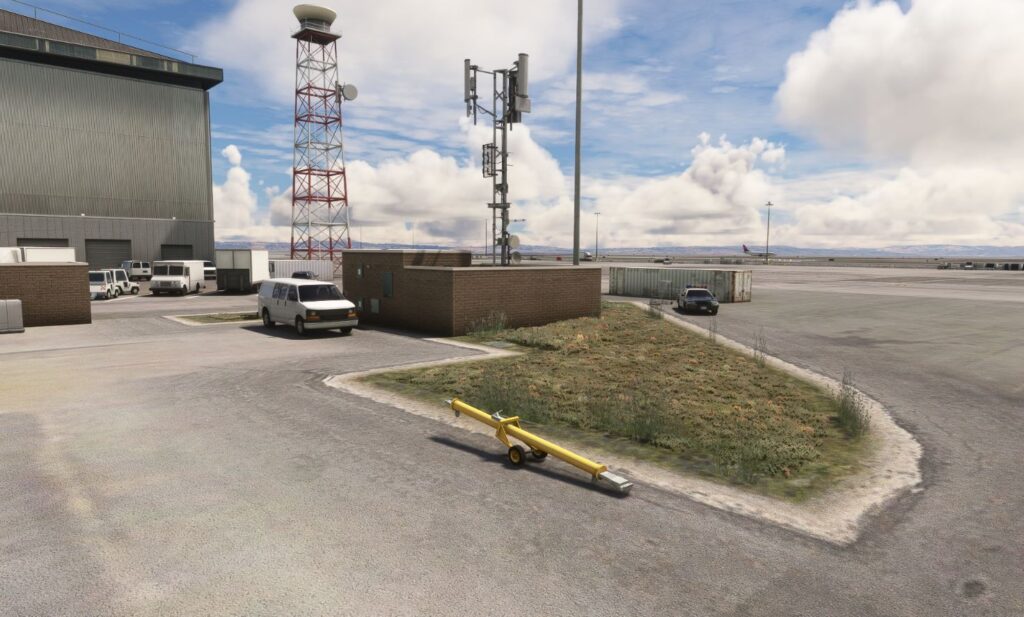
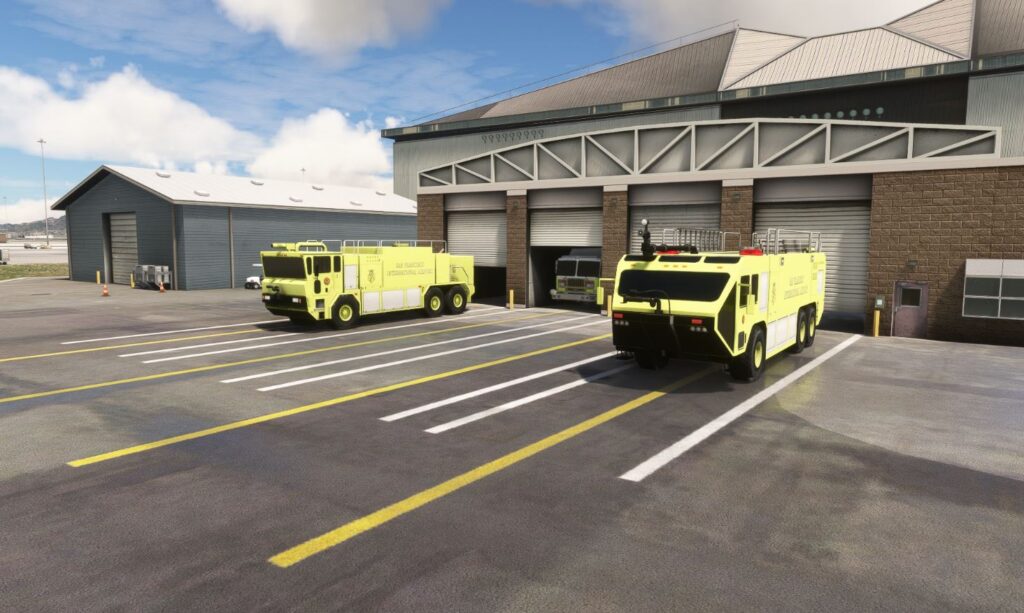
Animations
The major visual animation is the AirTrain which can be seen on its dedicated elevated lines travelling between the various terminals.
Also included as part of the airport is the VGDS system used to assist in docking at various A,B, E and G gates. These worked as expected.
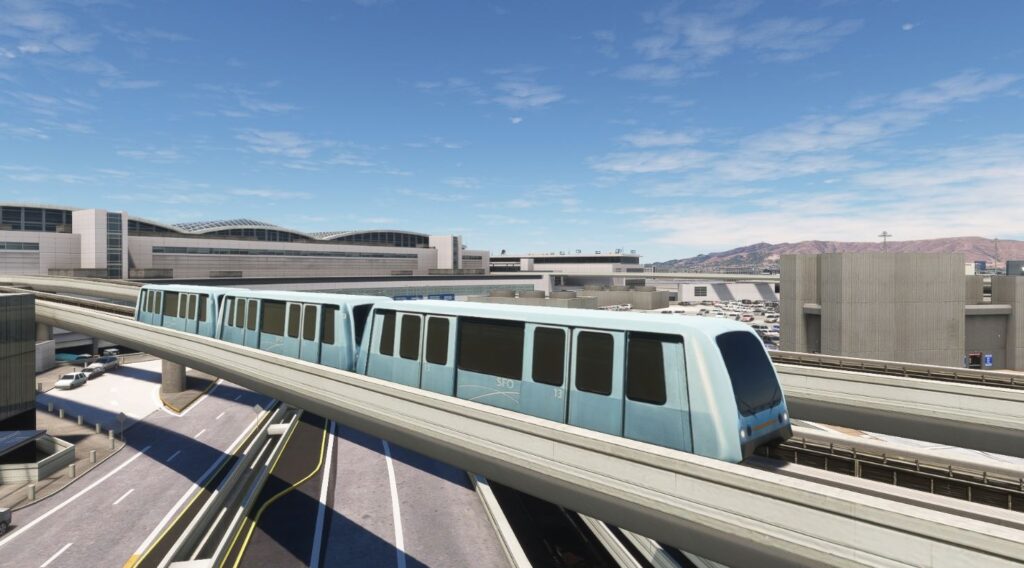
Night
It was no surprise to see that the night time graphics were to the same high standard seen in the day time rendition. The various types of lighting and the way their lighting effects were portrayed was spot on.
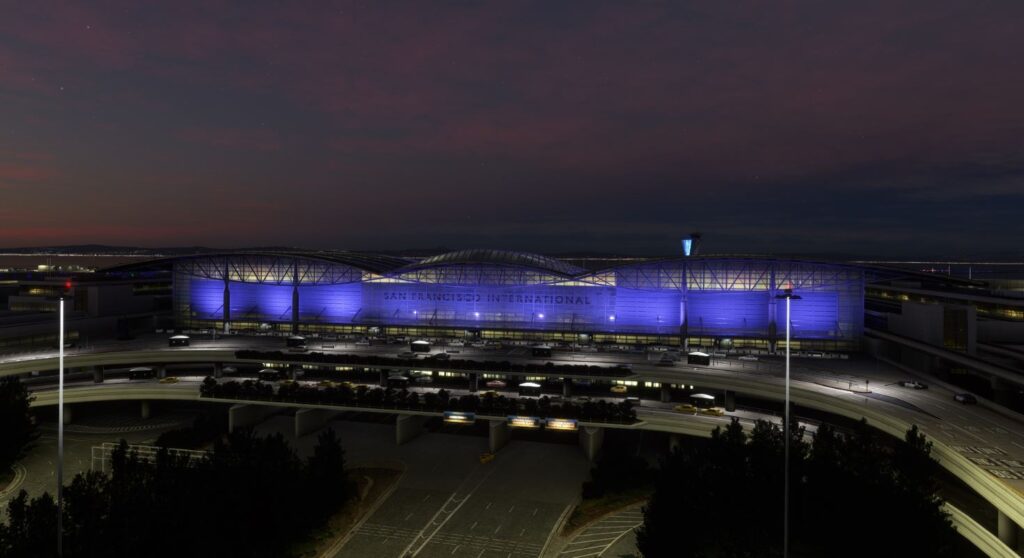
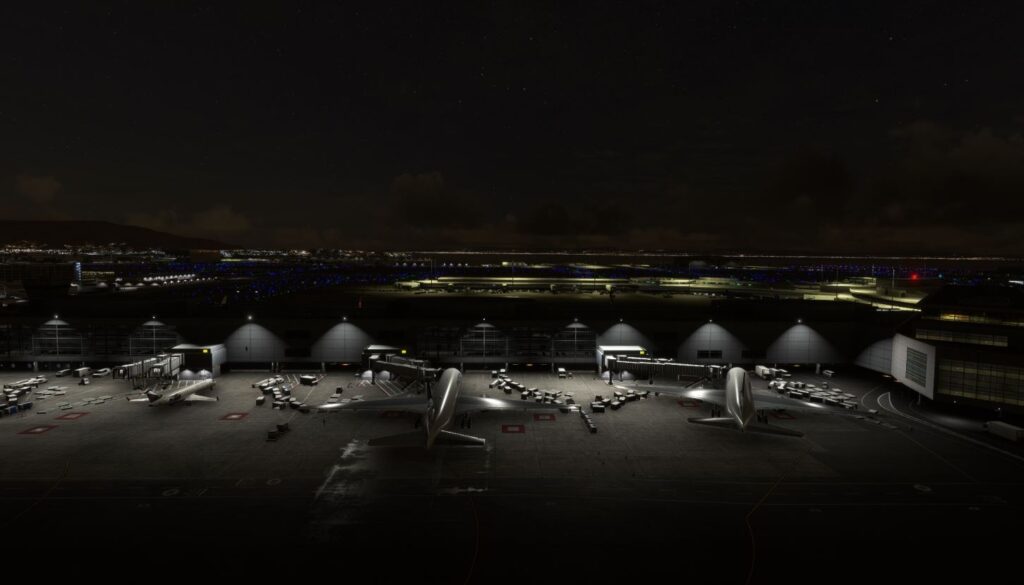
Approaches
I successfully landed multiple times utilizing the available instrument approaches as well as visual approaches.
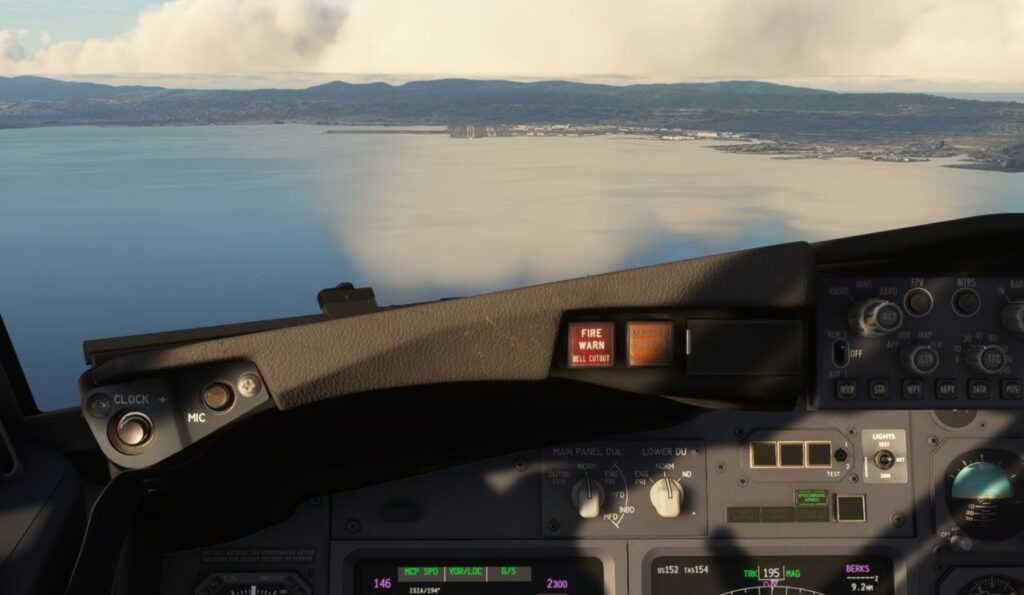

Final Thoughts
I loved everything about this airport. It took a while for the developer to release this gem but it was worth the wait. Whether you like flying large long haul liners or want to use it is a base to fly your single engine aircraft to simply enjoy the beautiful California coast scenery this will make a great addition to your MSFS world.
| Pros | Cons |
| ➢ Beautifully rendered airport ➢ Day or night a true joy to behold ➢ Worth every penny | ➢ Could prove to be a challenge to those with a less powerful PC especially if you are using an AI traffic program to inject airport traffic ➢ Would have liked to see a configuration option to remove terminal interiors |
| Purchase | Test System |
| SIMMARKET.com Developer: Pilot Experience Sim Price: EUR 19.00 (+tax EU customers) | Ryzen 5 5600X, ASUS TUF X570-Plus MB, 1 TB NVMe SSD, 32Gb DDR4 RAM, ASUS RTX 3060 OC w/12Gb VRAM, Win 11, Track IR, FSLTL AI traffic, MSFS auto FPS app |

